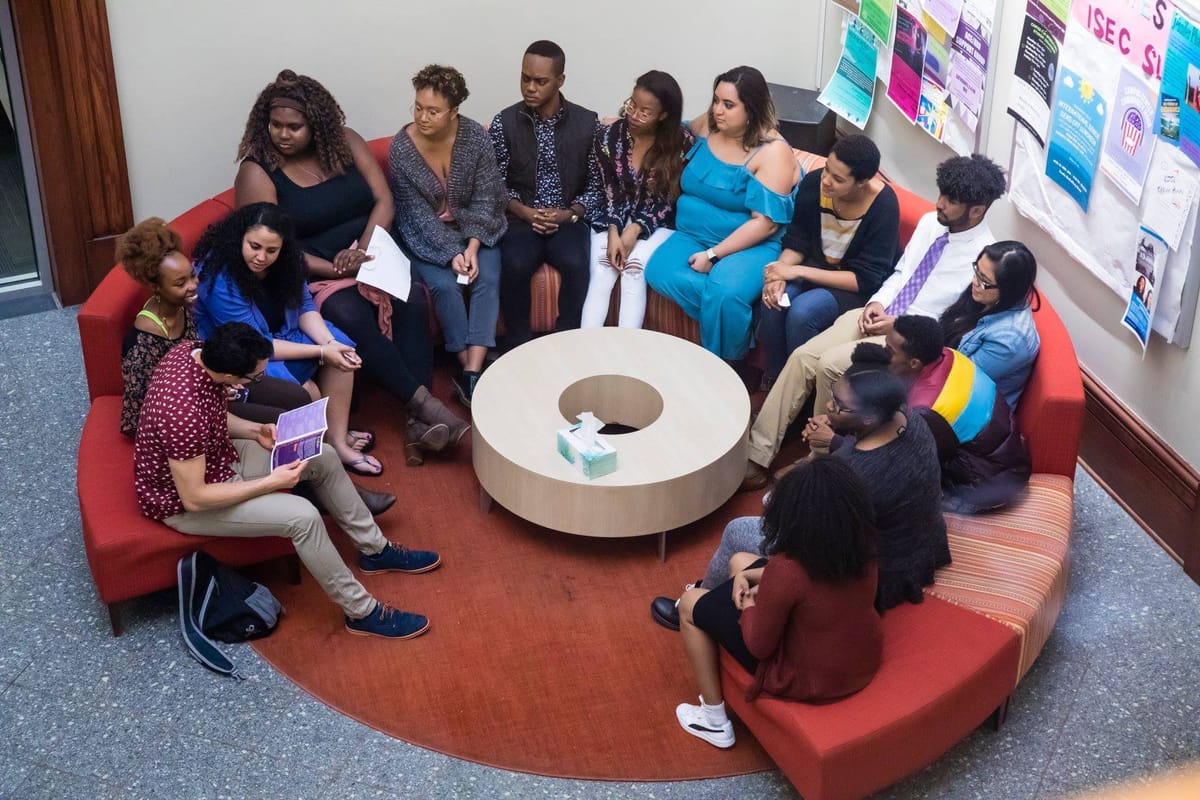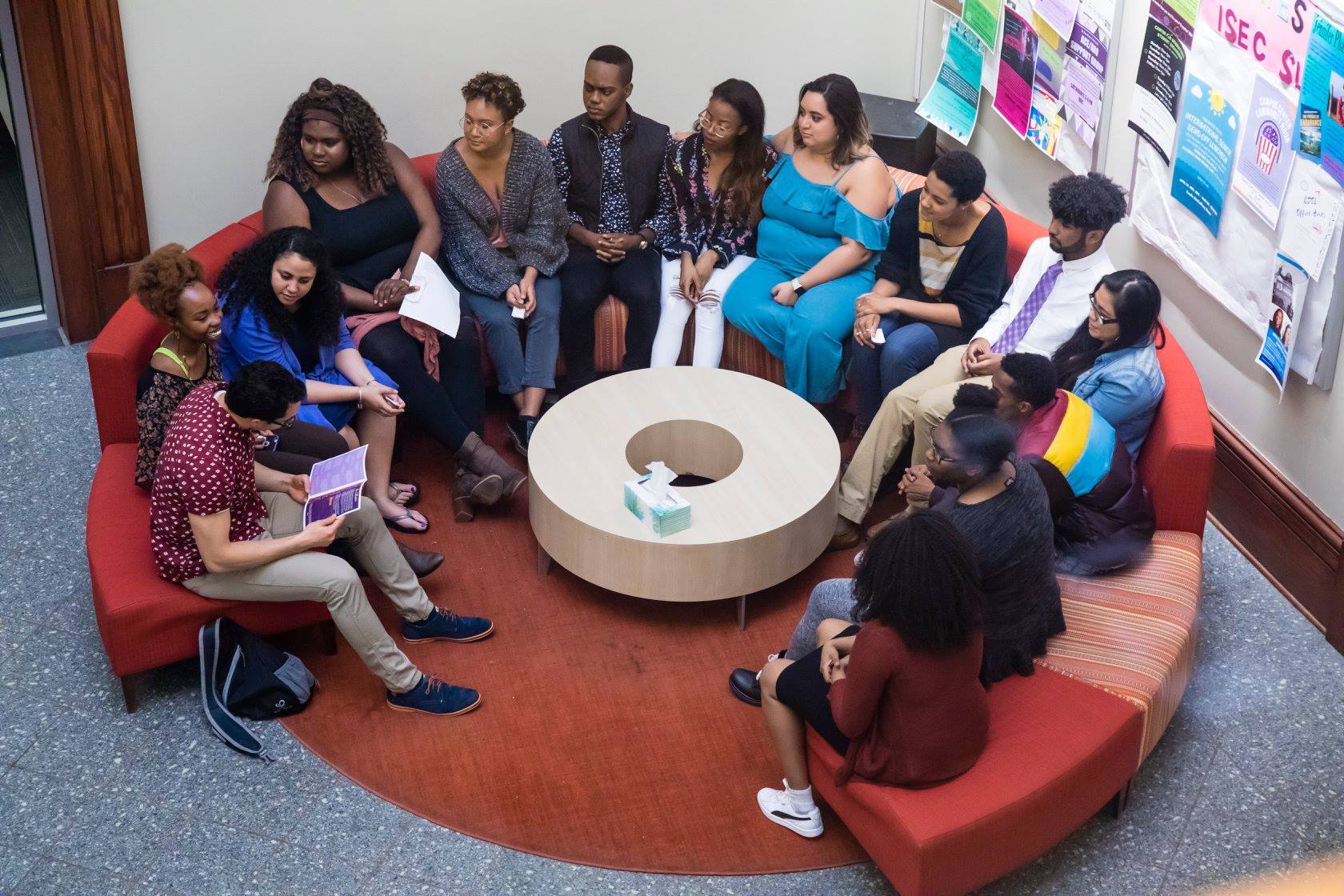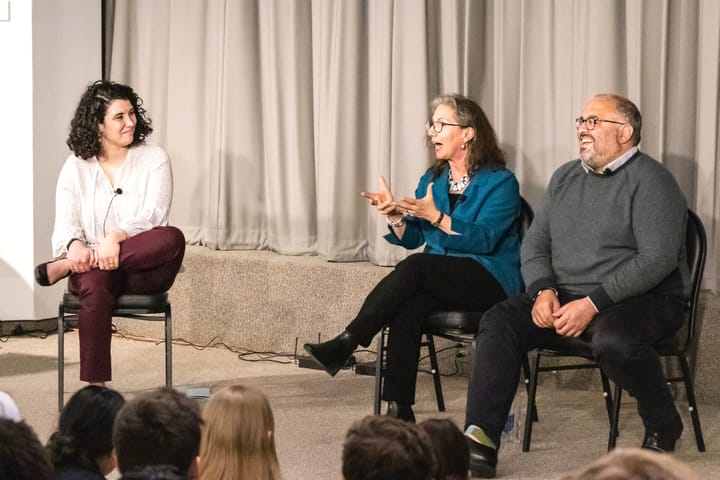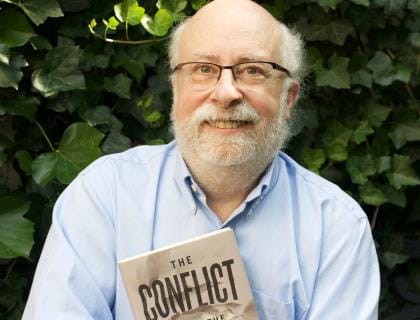The Center for Restorative Practices: Reimagining Justice
Founded in 2021, the Center for Restorative Practices is drawing from long-established Indigenous practices to create a contemporary space for redressing community divides, repairing relationships, and reflecting on Amherst’s model of punitive justice.

At a Feb. 18 workshop from the ongoing “Who, What, Why is the Center for Restorative Practices” series, Director of the Center for Restorative Practices (CRP) Suzanne Belleci opened with an interactive thought experiment. First, she showed participants one of the top images for the search query “justice”: Lady Justice wielding her sword and scale, elevated gloriously in the clouds. Then, Belleci presented photos she had taken of restorative circles around the world: an outdoor gathering in post-genocide Rwanda, a classroom within the Oakland Unified School District, a meeting place in Micronesia, and a group of Vermonters recently released from prison. Participants noted that the image of Lady Justice conveyed themes of individualism, impartiality, and unflinching authority, whereas Belleci’s slideshow radiated ideas of collective responsibility and respectful collaboration.
“Now, I’ll show you our official definition of restorative justice, but I don’t think it’s going to be any better than what you all just thought up on your own,” Belleci laughed.
She then showed participants the official philosophy of the center, which is housed within the Office of Diversity, Equity, and Inclusion: “The CRP is a campus-wide collaborative effort to incorporate restorative philosophies and practices into the Amherst community, to prioritize the building, maintaining, and, when harmed, repairing of relationships between all members of the community. By teaching, learning, and practicing how to engage in conflict, we understand our impact and our avenues for healing.”
In the short time since its founding in 2021, the CRP has used Restorative Circles as its primary tool as they work to make restorative justice a fixture of Amherst’s culture of safety and accountability. These Circles enable faculty, administrators, and students to collaborate in dialogue about tense campus issues, like policing and identity-based harm, in an effort to create a more supportive and inclusive campus community.

Restorative Circles are part of the 80 percent of the CRP’s work that deals with the prevention of conflict. The rest of their work is reactive: 15 percent addresses the roots of distrust or violence between community members, and only 5 percent focuses on reintegration after a community member returns from a suspension, for example.
This emphasis on prevention is crucial, said Belleci, because restorative practice cannot appeal to community ties if community members never felt a sense of integration and belonging in the first place. Some recent examples of preventative practices are the “First Year Low Income (FLI) Community Building Circle” and the “Winter Beauty, Winter Blues: Community Building Circle.”
As Belleci sees it, the strengths of restorative practice are threefold: it provides a nonviolent space to reflect on past accountability and future commitments; it recognizes the reality that an individual’s actions have myriad causes and consequences for the community; and it facilitates a model of safety wherein every member of the community holds a responsibility to one another. She notes that restorative practices have deep roots in New England’s regional history, from which the CRP draws inspiration.
“The Abenaki, for one, have a tradition of sitting in a circle and passing a talking piece to focus the deep listening on the speaker, hearing from the heart of both a harm-doer and those who have been harmed,” Belleci explained. “Then, Mennonite communities in Canada adopted these practices as a way to welcome home those who had served time in prison and to prevent recidivism.”
In the CRP’s present work, these local legacies coalesce with Belleci’s own knowledge of the way restorative justice operates around the world, knowledge she accumulated over 25 years of traveling and peace-building work.
“I spent more than 15 years teaching in the Conflict Transformation Across Cultures (CONTACT) program, a three-week intensive peacebuilding course where roughly 60-70 restorative practitioners from around the world come to learn and to share from places like Afghanistan, Nepal, Angola, Northern Ireland, Tibet, the Diné Nation, Israel, and so many other regions where love, pain, and resilience are part of daily life,” she recounted. “I facilitated circles in Iraq, Bosnia Herzegovina, Macedonia, and Kosovo/Kosova bringing together people whose histories taught them to mistrust and fear each other, and, in the process, deepened my faith in and respect for the power of stories to connect and even heal.”
From these far-reaching locales, restorative justice found its way to Amherst’s campus in the aftermath of the 2015 Amherst Uprising. Assistant Program Director Athri Ranganathan ’16 says that the CRP was one tangible initiative that emerged from the longing for greater equity and belonging expressed in the Uprising, which demanded that the college “reckon with its history and make transparent and sincere efforts at improving the lives of Black students, staff, and faculty on campus.” It was six years later that the CRP finally launched in 2021, under the inaugural direction of The Manwell Professor of Life Sciences Allen J. Hart.
Diversity, Equity, and Inclusion Representative for the men’s squash team Andrew Leung ’23E was part of a student-led effort to research how restorative practices could be implemented at Amherst, along with Jeremy Thomas ’21, who was then president of the Association of Amherst Students (AAS).
Leung recalled one detail belying the political concerns involved in this process: “It would have been called the ‘Center for Restorative Justice,’ but Jeremy Thomas told me that there was pushback from the administration over the wording.”
“An emphasis on ‘justice’ implies that there was an ‘injustice’ present before the CRP’s founding,” Leung suspects.
Although its name avoids connoting injustice, the CRP’s most well-known initiative is devoted to raising questions and enabling honest discussion about policing on Amherst’s campus. In the fall of 2021, CRP organized a series of circles intended to reimagine campus policing, called “Exploring Policing and Campus Safety at Amherst.” Ranganathan recounted the experience: “Students, faculty, alumni, and staff, including ACPD, have sat together in these circles in ways that bring out stories of deep pain, fear, hope, and creativity born of deep hearing of self and others.”
The CRP shared the teachings of these Restorative Circles with the Campus Safety Advisory Committee (CSAC), and Belleci indicated that she is now “waiting on the CSAC report to come out to help inform our next offerings.”
Students’ personal experiences with Restorative Circles suggest that these conversations evoke community-building insights that are uniquely nuanced and thoughtful. After organizing and participating in a Restorative Circle with his team, Leung applauded the efficacy of these gatherings in overcoming the barriers to collaboration and intimate communication that pervade daily life.
“[Assistant Director of the CRP] Fabio Ayola made sure that the Circle was really tailored to our team’s needs. He asked us really specifically, ‘Who are you as a team, what are your values?’” Leung recalled. “And then, at the Circle, Ayola was asking these really difficult questions, like ‘Share a time in your life when you felt you couldn’t speak from your authentic self.’”
“I didn’t think people would be able to talk about that,” Leung admitted, “but by the end of the hour, we had never felt closer as a team.”
Given students’ hopelessness for police reform in the face of deep disagreements between students and administration, Leung is hopeful that these honest and intimate Circles can have a broadly positive impact on Amherst’s culture of accountability. “I could see why people would think [restorative justice] won’t work, because we’re so used to using punishment to address harm,” he acknowledged. “It’s hard to imagine another way … But that doesn’t mean we shouldn’t try.”
Beyond Amherst’s campus, the concept of restorative justice has been gaining momentum throughout the country, according to Belleci.
“What I’m amazed at is how quickly restorative justice is spreading throughout the nation and globally. Amherst is one of the few colleges in the country that has a Center for Restorative Practices; in that regard, we are at the forefront of a movement. And yet, we get frequent requests from other institutions of higher learning asking us how we did it and how they can do it, too. It’s happening!” Bellici exclaimed.
She also stressed that restorative justice has taken root in some corners of our criminal justice system. “I ran a community restorative justice center in Vermont nearly fully funded by the Department of Corrections, and they were diverting major funding from their budget to support restorative circles of support and accountability to reduce recidivism and keep folks from entering the system in the first place,” she said.
Restorative justice is complicated, said Belleci. The CRP will continue to facilitate hands-on training so that the Amherst community can apply the practice to its fullest potential.
The CRP is holding three more introductory workshops on March 31, April 4, and May 13. Registration information can be found in The Daily Mammoth.





Comments ()